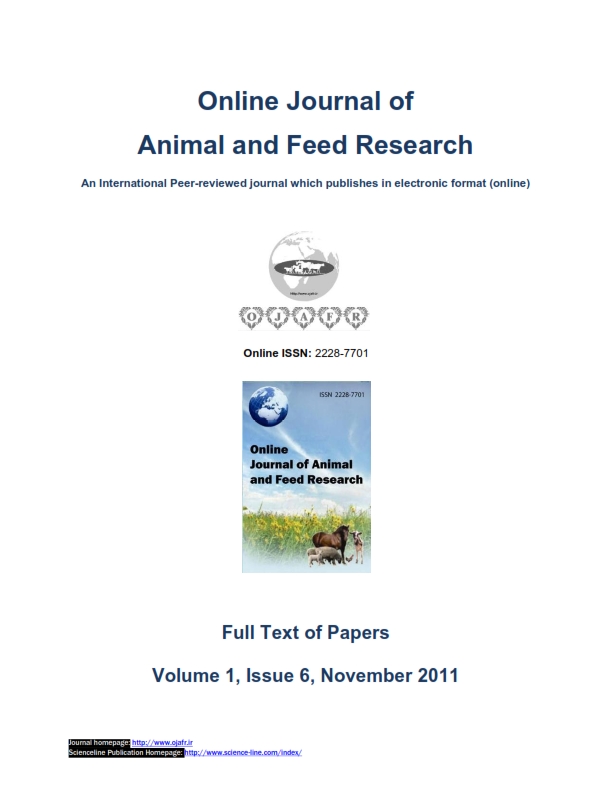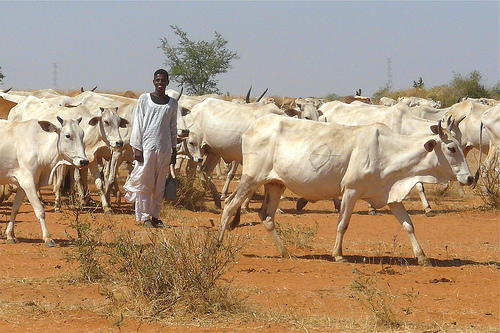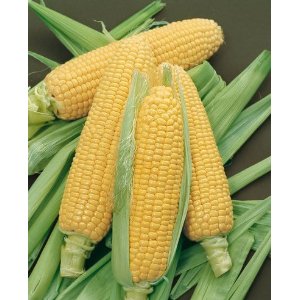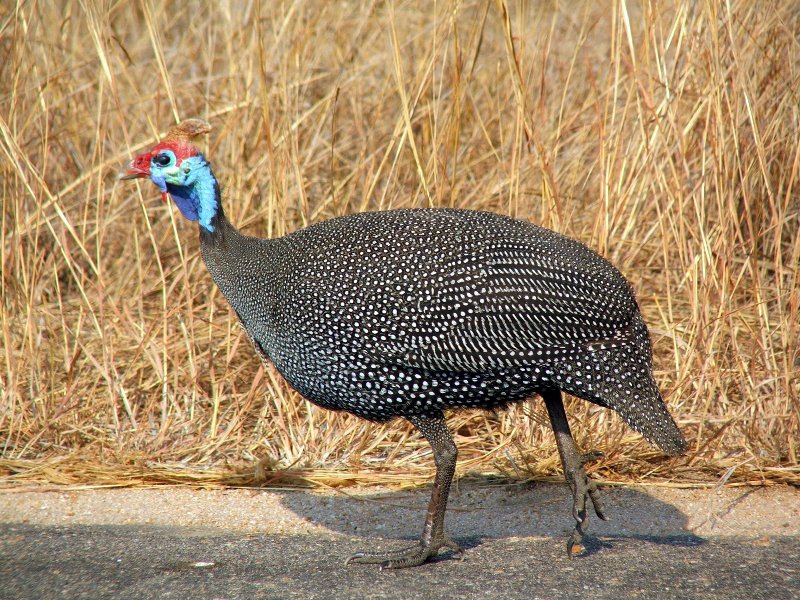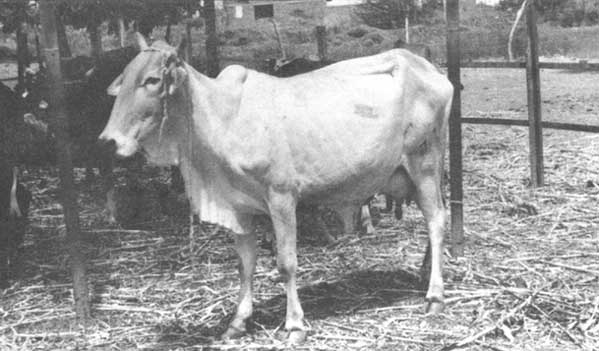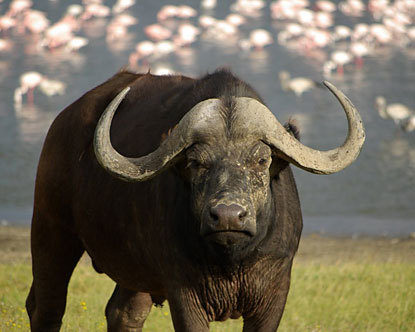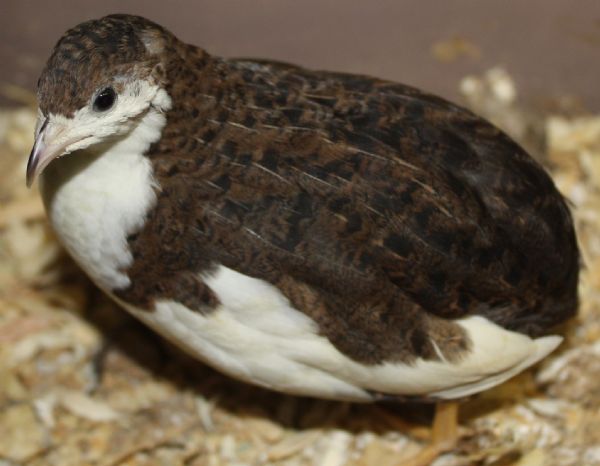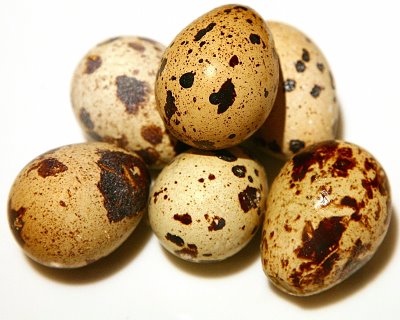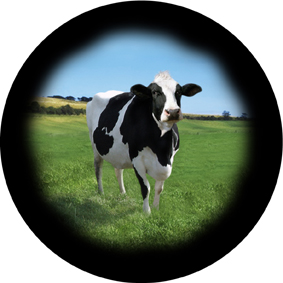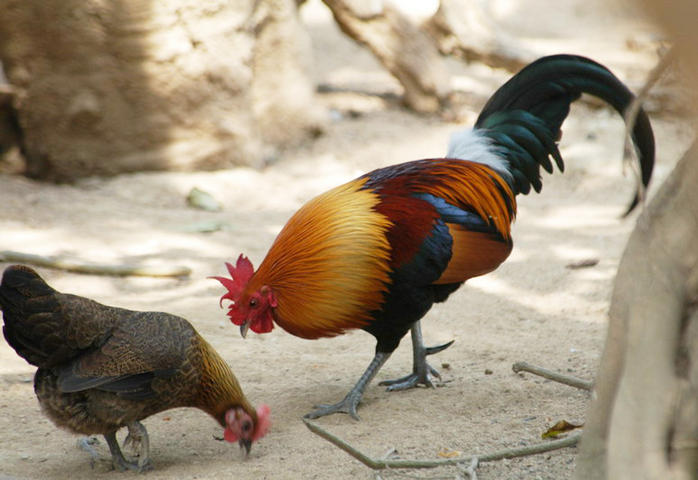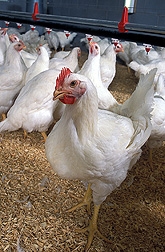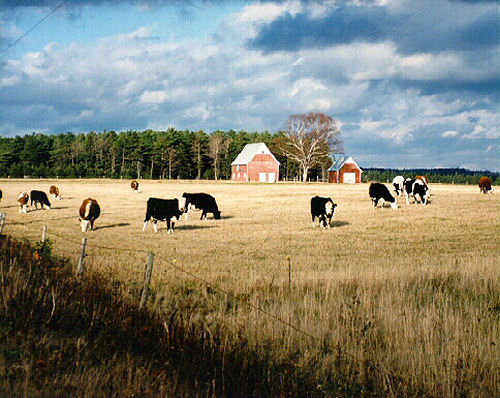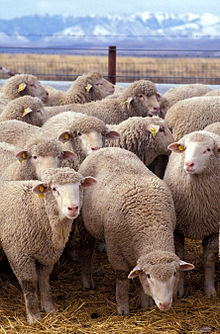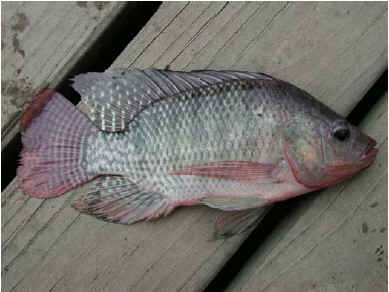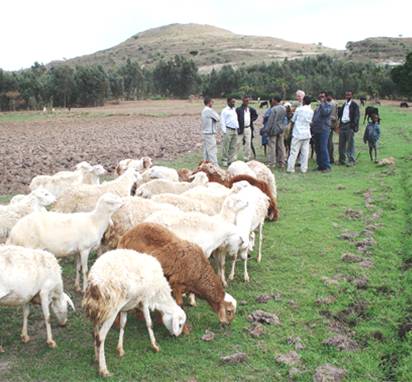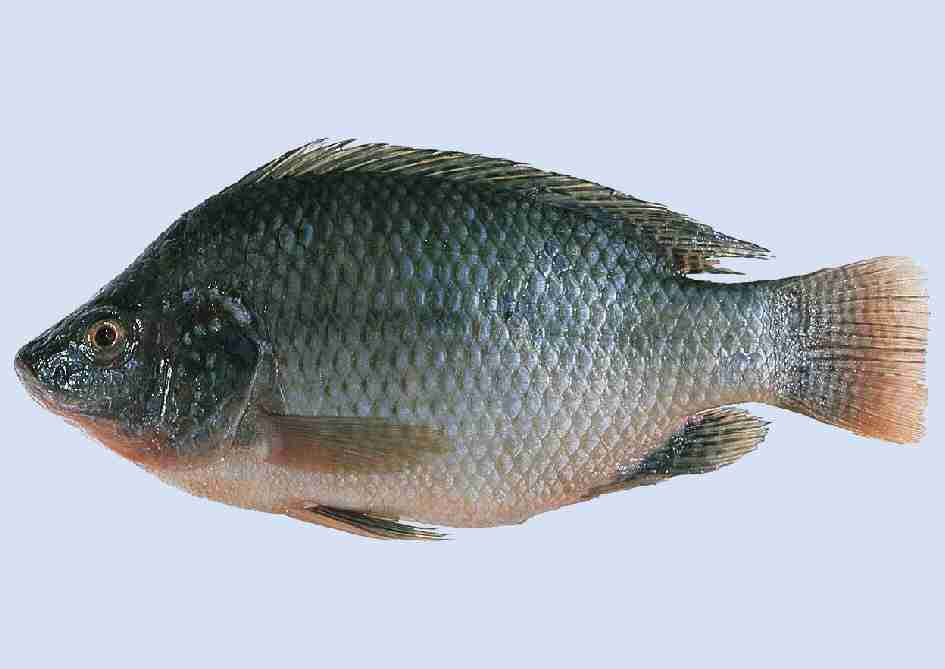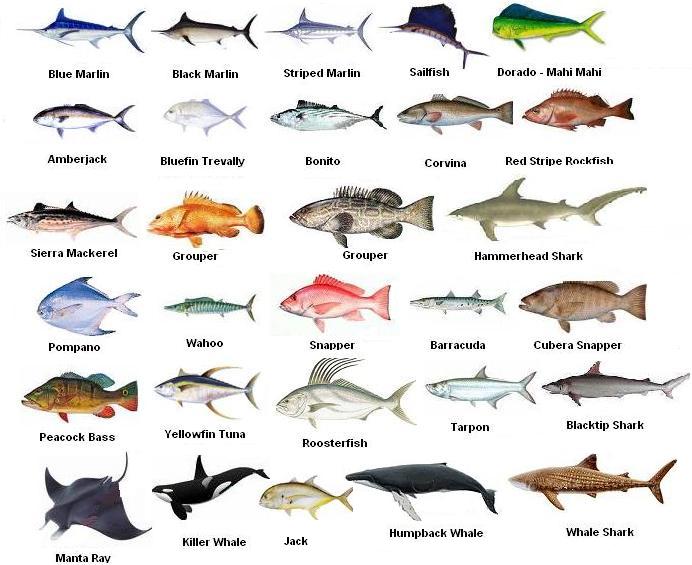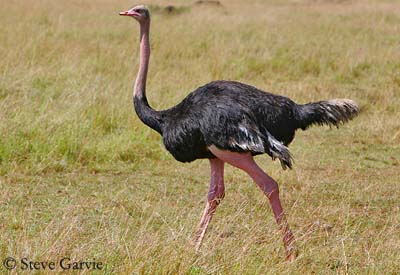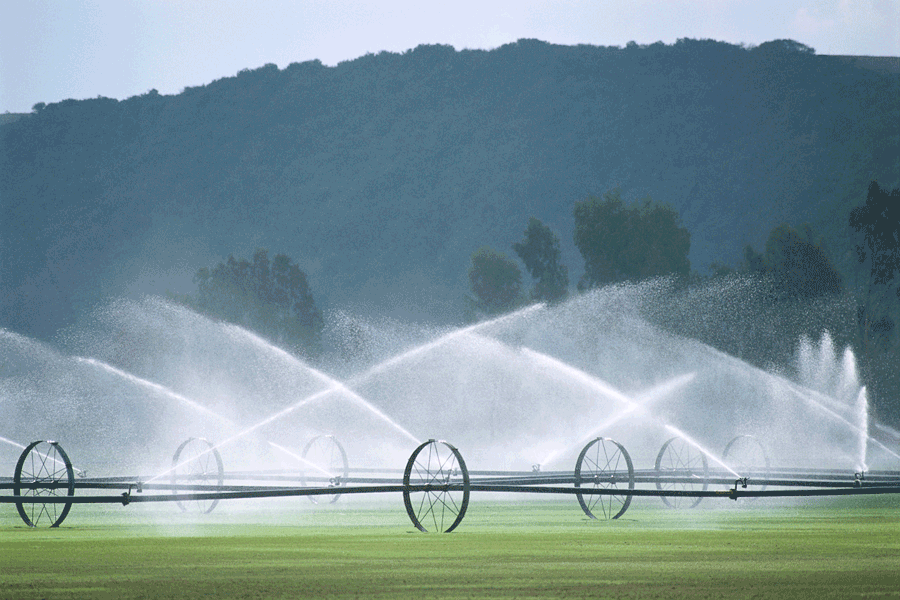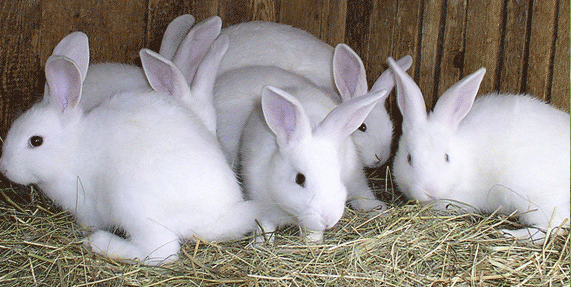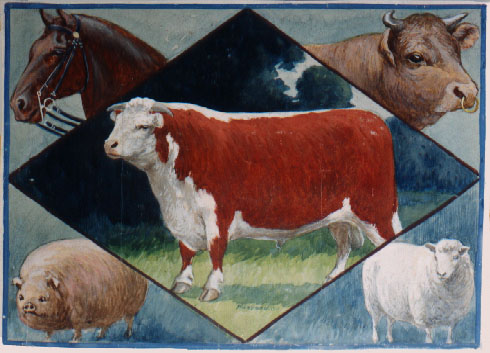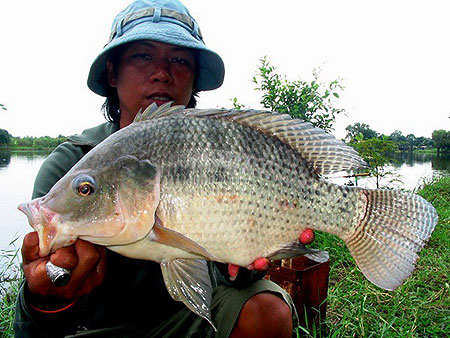Volume 1 : Issue 6 - November 2011
|
Research Title/ Field |
Article (Abstract) |
Download |
|
. Productivity of North Kordofan cattle
|
Original Research, A41 Bushara, I. and Mahagoub, M.M.M. ABSTRACT: The present study focused on the sedentary cattle husbandry production system in North Kordofan (western Sudan). Seven farms (designated as A, B, C, D, E, F, and G) around El-Obeid city were randomly selected. Recently calved cows in each farm were closely monitored through a period of 365 days. The recently calved cows were monitored for post-partum ovarian activity using milk progesterone radioimmunoassay. Days to conception were taken as non-return to oestrus. The results revealed that there was a wide variation in both days to first ovulation and days to conception. The majority of cows showed delayed post-partum activity and days to conception with longest days to resumption of ovarian activity showed by farm G (167.00±59.68days) and lowest days in farm C (61.78±14.99 days). The interval to conception was longest in farm B (226.06±52.63 days) and lowest in farm C (102.67±48.93 days). Cows in all farms showed gradual increase in BW from calving up to 90 days. BCS was found to decrease from calving to 60 days. Dry season showed an adverse effect on fertility compared with the rainy season. Wet season showed significant negative correlation with BWT at calving, milk yield at 30, 60 and 90 days with days to ovulation. It could be concluded that, poor reproductive performance in cows kept under extensive traditional system was due to poor management practices, which ignored high-energy supplementation during late pregnancy and early lactation, especially during the dry season when rangeland pastures deteriorate drastically. Suckling further exacerbated the effect of poor nutrition resulting in extended post-partum anoestrus and low conception rates. Controlled mating and suckling together with good feeding strategies may greatly enhance reproductive performance of cows kept under extensive systems of management. Keywords: Cattle, sedentary system, nutrition, reproductive performance, El Obeid, Sudan |
|
|
Correlation between seed tests and field emergence of two maize hybrids (SC704 and SC500)
|
Original Research, A42 Aliloo, A.A. and Shokati, B. ABSTRACT: Early emergence and stand establishment of maize (zea mays L.) are considered to be the most important yield-contributing factors. The influence of seed vigor on these factors is vital. Therefore, five laboratory tests and field experiment were conducted on basis of a randomized complete block design (RCBD) with five replications in 2011, to evaluate the correlation among the seed vigor tests and field emergence of two maize hybrids (SC704 and SC500). In laboratory tests, differences between two hybrids for cold test and electrical conductivity test were significant (P≤0.01). The leachates of hybrid SC500 was 35% higher than the leachates of hybrid SC704. However, high germination percentage was obtained by hybrid SC740 in cold test. A Statistically significant difference was found between hybrids in field emergence percentage (P≤0.05). The field emergence of hybrid SC704 and hybrid SC500 was 71% and 37%, respectively. The farm emergence percentage had the significant negative correlation (-0.71) with conductivity test, but positive correlation (0.79) with cold test. No significant correlation between the standard seed germination and the field emergence was detected. Therefore, the standard germination test was not a good indicator for field emergence percentage. However, cold and conductivity tests were the best predictor of field emergence than all the other laboratory tests. Keywords: Field emergence, Seed vigor, Seed viability, Zea mays |
|
|
Performance of guinea fowl (numida meleagris) fed varying protein levels
|
Original Research, A43 Seabo, D., Moreki, J.C, Bagwasi, N. and Patrick Nthoiwa, G. ABSTRACT: This study wasconducted to investigate the effects of different protein levels on growth of guinea fowl keets (Numida meagris) of the same age under intensive system in a typical poultry house from 6th week to 12th week of age. They were fed commercial broiler starter for two weeks and maintained on same diet of 18% crude protein for 5 weeks of age and given water ad libitum. The birds were separated into three pens. One hundred and twenty old guinea fowls were assigned at grower period on 3 dietary protein levels of 14, 16 and 18% crude protein (CP) on same metabolizable energy level of 2800 kcal/ kg. The study was conducted in Kgatleng District in Botswana used to test the performance of the female birds. The birds were killed at the owner’s farm by cutting the neck through the jugular vein. This was used to determine the carcass parameters. There was significant difference (P<0.05) in feed intake between the three treatments. The internal organs for the treatments were not significantly different. Keywords: Dietary protein, guinea fowl, body weight gain, feeding performance |
|
|
|
Original Research, A44 Musa, A.M., Mohammed, S.A., Abdalla, H.O. and Elamin, K.M. ABSTRACT: Data on (239) females from Kenana cattle population reared in the Um-Benein livestock Research Station and villages around in addition to some areas in the Gezira State were used in this study to determine milk production, the relationship between linear body measurements and between the latter and age and milk production. Traits studied were daily milk yield (DMY), days in milk (DM), height at withers (HTW), heart girth circumference (HGC), abdominal circumference (ABC) and body length (BL) with the ultimate goal to securing a valid indicators of dairy potential of Kenana cattle .The overall means of daily milk yield and days in milk for Kenana cattle were 4.3±0.376 (kg) and 249.98±2.96 days, respectively. Peak daily milk yield was 5.74±0.33 (kg) reach at the third lactation. The correlation coefficients between daily milk yield and linear body measurements were 0.36, 0.20, 0.54 and 0.28 for heart girth, abdominal girth, body length and height at withers, respectively. Prediction equation was derived to estimate milk yield with (0.52) coefficient of determination (R2). Means daily milk yield (kg) obtained using the estimated method and developed equation using linear body measurement were 4.721±0.162 and 4.705±0.090, respectively. No significant differences (P≤0.05) in means of daily milk yield obtained using the two methods. Keywords: Linear body measurements, milk yield, Kenana cattle, Sudan. |
|
|
Impact of season, sex, age, and agro-ecology on the prevalence of fascioliasis in buffalos of Ladakh
|
Original Research, A45 Kuchai, J.A., Tak, H., Chishti, M.Z., Rasool, M., Dar, S.A., Ahmad,J. ABSTRACT: Studies on fascioliasis of buffalos were undertaken at slaughter houses, household and livestock farms under different climatic conditions existing in Ladakh region of Jammu and Kashmir State in order to find out the various associated factors and their impact on the prevalence of fascioliasis. The study revealed that the infection rate was 62.05%, 34.37%, and 27.77% respectively in slaughtered, livestock farm and household buffalos with an overall prevalence of 42.59%. Significant variations were observed in the prevalence with respect to various factors of the host as well as the study area; of which the most important one was the climate. Overall highest (48.14%) seasonal prevalence in all types of buffalos was recorded during wet season while as only (37.03%) was recorded during the dry season. It was noticed that a higher (45.83%) infection rate was recorded in younger (> 3 years) buffalos than in adult ones (40.00%). Sex of the host was also found having an impact on the prevalence wherein females were more infected (46.42%) than males (38.46%). It was also observed that the infection rate was high (44.62%) in comparatively low land areas as compared to high altitudes (40.38%). Therefore it was concluded that the prevalence of fascioliasis is very high in buffalos of this region and season and locality of the region as well as sex and age of the host species plays an important role in the prevalence of fascioliasis and it is a hope that this study will provide necessary information regarding fascioliasis in buffalos of Ladakh (where livestock rearing is one of the important sources of livelihood) for their effective management and hence for a better production which will benefit the resource poor people of this region. Keywords: Prevalence, Fascioliasis, buffalos, Ladakh |
|
|
Analyzing of quail eggs hatchability, quality, embryonic mortality and malposition in relation to their shell colors
|
Original Research, A46 Ayman E.T. ABSTRACT: A total 2400 hatching eggs were obtained from Japanese quails breeders ranged from 100 to 150 days of age used to analyze the effect of shell color on fertility, hatchability, embryonic mortality and malposition as well as internal and external egg quality. Results revealed that shell color had significant effect (P<0.05) on fertility and scientific hatchability while it doesn't affect commercial hatchability percentage. Moreover, there were significant effects (P<0.05) for shell colors on early and late embryonic mortalities but not for mid embryonic mortalities. In addition, egg shell color represented some differences for embryonic malposition. Results also showed that egg shell color had significant effect on egg weight, length, width, volume, haugh unit, shell thickness and egg weight loss. But doesn't affect shape index, yolk index, yolk percentage, albumen percentage, shell weight and shell percentage. We recommended that spotted and white shelled eggs should be excluded from hatching procedures and used for another purpose because they recorded the lowest scientific and commercial hatchability percentages, highest early embryonic mortalities, the lowest egg volume and shell thickness as well as the highest values for egg weight loss during egg storage. Keywords: Quail egg colors, fertility, hatchability, embryonic mortality and malposition, egg quality. |
|
|
Performance of Kenana × Friesian cross-bred cattle in central Sudan
|
Original Research, A47 Yahya, A. Kh., El-Tetraifi, M. and Siddig, F.S. ABSTRACT: A study to evaluate performance of Friesian crosses with Sudanese (Kenana x Friesian) dairy cattle was carried out in central Sudan conditions in tow herds at tow dairy farms (Kenana company, and ELbshaier dairy farms). A sample of 128 records (90+38 from Kenana and Elbashaier dairy farms respectively) were studied for the performance of different blood levels on milk production, days in milk, calving interval, age at lactation and lactation number. Analysis of variance, correlations, regressions and mean separation utilizing "Duncan" were done in version 9(SPSS) computer program. The results showed that the overall mean lactation yield (kg), days in milk and calving interval were: 3603.4±127 kg, 317.3±8 days and 420.3±8 days respectively. Mean lactation milk yield was highest in 75% blood level (4724.1 kg).On the other hand, Mean milk yield for: 25%, 37.5%, 50%, 62.5%, 75%, 87.5%, and 100% were: 2497.7, 3302.0, 3508.4, 2657.0, 4724.0, 4362.3, and 3507.5 kg respectively. There were significant (P<0.01) differences between means of milk yield, days in milk, and calving interval in the tow farms Kenana and Elbashaier respectively. Blood level, herd, lactations and their interactions had a significant (P<0.05) effect on milk production. Also blood level had a significant (P<0.01) effect on days in milk, and the mean days in milk for 25%, 37.5%, 50%, 62.5%, 75%, 87.5%, and 100% were: 354.0, 291.0, 307.0, 298.6, 339.9, 302.5, and 377.0 days respectively. Milk yield was affected by: herd, lactation and blood level, but there was a positive significant (P<0.05) correlation between milk yield and blood level. Mean calving interval for 25%, 37.5%, 50%, 62.5%, 75%, 87.5%, and 100% were: 466.0, 454.0, 395.7, 382.9, 445.7, 401.0, and 416.8 (days) respectively. Keyword: Performance, Friesian crosses, Central Sudan. |
|
|
Growth and development of muscles, bones and fat of domestic fowl |
Original Research, A48 Elhashmi, Y.H., Elamin A. and Hassan, H.E. ABSTRACT: This study was conducted to evaluate the growth pattern of muscles, bones and fat of domestic fowl. Eighteen day old chicks were reared for 22 weeks and serial slaughters were done every four weeks for evaluation. Results showed that the feed conversion ratio was 1:4, highest feed intake at 22 weeks of age and highest weight gain at 15 weeks. Carcass yield was 60%. The great mass of muscle was found in the thorax and hind limb, highest bone percentage was found in the pelvis and wing and the flank had high percentage of muscle and connective tissues and all regions had the same percentage of fat. Thorax and hind limb had high growth rate when compared with pelvis, wing, neck and flank. Key words: carcass yield, body regions, serial slaughter |
|
|
Poultry waste management in botswana: a review
|
Original Review, A49 Moreki, J.C. and Chiripasi, S.C. ABSTRACT: A literature review was conducted to identify methods that are used to dispose of poultry waste in Botswana. It appears that the predominant methods of poultry waste disposal in Botswana are direct disposal at the landfills, application as a fertilizer in gardens or farms, burning and compositing. The use of poultry manure and/or litter to raise fertility status of the soil appears to be appropriate given that soils in Botswana are generally poor in plant nutrients, especially phosphorus. Given the high feed costs in Botswana it is suggested that the use of poultry manure and/or litter as livestock feed should be considered in areas where foot and mouth disease (FMD) is endemic such as Chobe and North West Districts, as meat from these districts does not enter the European Union market. Keywords: Beef, calcium, litter, manure, phosphorus, pollution, potassium |
|
|
The effect of free or restricted access to artificial shade on respiration rate, behaviour and performance of grazing steers
Selected by OJAFR editors as Hot Paper in terms of careful work, write and submission |
Original Research, A50 Rovira, P. and Velazco, J. ABSTRACT: The effect of access to artificial shade on respiration rate, performance and behaviour of grazing steers was determined during summer. Forty-two yearling steers were randomly assigned to 3 treatments without replication: 1) no shade, 2) free access to shade, and 3) restricted access to shade. Animals with restricted shade were daily removed from the grazing paddocks and enclosured in a resting area with shade and water between 10.00 and 16.00 h while animals of group 2 had both shade and water available ad-libitum in the grazing area. The respiration rate of control steers (69 breaths/min) was significantly higher than that of shade steers without differences between free and restricted access to shade (58 and 56 breaths/min, respectively). Total grazing time during daylight hours was not affected by shade availability (515 min). Between shaded treatments, animals with restricted access to shade spent significantly (P< 0.05) more time grazing during the morning than animals with free access to shade to compensate the lack of grazing between 10.00 and 16.00 h (241 and 168 min, respectively). The amount of time steers with free access to shade spent in the shade structure was strongly related to air temperature (R2=0.85). When air temperature averaged 23.1ºC between 06.00 and 20.30 h steers spent on average 50 min in shade; while when temperature averaged 29.6ºC steers spent 422 min in shade. No significant difference was found in overall average daily gain among treatments (538 g/a/day). The provision of shade either ad-libitum or restricted reduced respiration rate of steers without affecting diurnal grazing time and animal performance. Keywords: Cattle, behaviour, respiration rate, shade |
|
|
Morphological characteristics of Farta sheep in Amahara region, Ethiopia |
Original Research, A51 Bimerow, T., Yitayew A., Taye, M. and Mekuriaw, S. ABSTRACT: A study to describe the physical body characteristics of Farta sheep was undertaken in south Gonder zone of the Amhara Regional State, Ethiopia. Three districts (Estie, Farta and Lai-Gaint) were selected purposively based on sheep population and accessibility. Both qualitative and quantitative measurement data was collected on 1050 (878 Female and 172 male) sheep. Three coat patterns - plain (54.9%), spotted (29.5%) and patchy (15.6%) were observed. Farta sheep have many colour types to which white coat colour was relatively frequent (35.3%; 40.4% for males and 34.3% for females) in both males and females and black was the next dominant coat colour only for males. Almost all sheep had coarse fleece (96.6%) and horizontal ear form (99.7%). Farta sheep is short fat tailed. 67% of males and 10% of females were horned. The overall mean body weight, wither height, heart girth, body length and pelvic width obtained were 25.8±0.26 kg, 63.6±0.31 cm, 70.4±0.38 cm, 55.4±0.30 cm and 12.7±0.11 cm, respectively. Fixed effects age and sex had affected all the traits considered. Male and older age sheep were consistently larger (P<0.01) for all the traits over female and younger sheep respectively. Generally, it is possible to conclude that Farta sheep is relatively of smaller body size as compared to other breeds of the country. Efforts to improve the performances of Farta sheep should consider the harsh environmental condition to which the breed is maintained. Keywords: Body weight, Farta sheep, linear body measurements, phenotypic characterization |
|
|
Nutritional effectiveness of water hyacinth leaves combined with wheat bran and cotton seed cake on the performance of Nile tilapia (Oreochromis Niloticus)
|
Original Research, A52 Adam Sulieman, H.M. and Ferensio Lado, E. ABSTRACT: The aim of this study to evaluate the different levels of water hyacinth plant leaves in the diet of Nile Tilapia and their effect on growth performance so as to eliminate the water hyacinth plant from the Nile and provide a cheap food for fish. In this experiment the dried water hyacinth leaves (Eicchornia crassipse), wheat bran and cotton seed cake were used in different ratio to formulate two experimental diets (A and B). Diet (A) contains 70% wheat bran, 20% cotton seed cake and 10% water hyacinth leaves, while diet (B) contains 65%, 20% cottons seed cake and 15% water hyacinth leaves. These diets were fed to studied fish with 5% per their body weight for 105 days. The results of this study revealed that the diet (A) has higher growth performance on studied fish than those fed on diet (B). The results of food conversion ratio (FCR, 4.04) in diet (A) and food conversion ratio (FCR, 5.73) in diet (B), and the increment of growth rate in fish fed with diet (A) more efficient on the growth performance of studied fish than diet (B) except in the case of protein efficiency rate (PER) it's found to be more in diet (A) than diet (B). It was concluded that the diet (A) had better growth performance than diet (B) on the feeding regime of Nile tilapia (Oreochromis niloticus). Keyword: Nutritional effectiveness, water hyacinth leaves, wheat bran cotton seed cake, Nile tilapia |
|
|
Adaptability and productivity of Washera rams and its crosses with Farta sheep in south Gonder zone of Amhara region, Ethiopia
|
Original Research, A53 Taye, M., Yitayew, A., Mekuriaw, S. and Bitew, A. ABSTRACT: A rapid survey was conducted in south Gonder zone districts to collect information on the adaptability and productivity of distributed Washera rams and its crosses under smallholder farmer’s management systems in the study areas. Pre-survey information was collected from zone agricultural office professionals and checklist was used to collect information from zone and district professionals, development agents and smallholder farmers. In addition, physical observation and body measurements were taken on rams and their progenies. Since the distribution has started in 2005, 1965 Washera rams were distributed in to nine districts by different organizations like Food for Hunger International, World Vision, Research and District Agricultural and Rural development office (WoARD) safety net program. According to the professionals and farmers judgments, Washera sheep has many economically important traits of which better growth rate, attractive coat color and big fat tail are the most important ones. Farmers recalled some adaptation problems as susceptibility to food shortage and disease, especially at their early age of arrival. The observed physical measurements depicted that these sheep are performing well. The body weight and other linear measurements obtained for rams were better than the values for the same breed of sheep at Adet and Quarit. Among the interviewed farmers (70%) preferred to rear Washera and its crosses while 8.7% of them preferred their locals (Farta). In general, most of the farmers (73.9%) have positive comment and suggestion on the distribution of Washera rams through which the performance of the locals could be improved. For future distribution, districts should consider when and where to buy and distribute the rams. In addition, for efficient use of the rams, the distribution should consider communal use of the rams in a common grazing land and it is better to distribute on recommended areas. Finally, in the context of animal genetic resource utilization and conservation, a strategy that would help to improve and conserve the Washera sheep at its belt should be designed. Keywords: Adaptation, fat tailed sheep, growth performance, performance assessment |
|
|
A comparative study on the chemical and physical attributes of wild farmed Nile tilapia (Oreochromis Niloticus)
|
Original Research, A54 Adam Sulieman, H.M. and Keji James, G. ABSTRACT: The research was directed towards the study of the fish species Orcochromis niloticus (Trewavas), formerly Tilapia nilotica (Linnaeus) in order to comparing the chemical composition and fish body weight characteristics of its farmed with their natural counterpart (collected from Nile River). Forty nine assorted fish species of each group (Tilapia noliticus) were randomly collected fresh from Sudan University Fish Farms and Nile River. For two groups the filleting yield (head, skin, viscera, fins and skeleton and fillet were taken) and chemical analysis were performed. The sequence percentage variation of fish body weight components in each fish was varied among studied species. Thus the order tend to decrease from fillet, head, fins and skeleton, viscera and skin in farmed fish and from fillet, head, fins and skeleton, skin and viscera in wild fish. Concerning the chemical analysis of major body constituents of studied fish whose main elements moisture, dry matter, ash, protein, fat and NFE were determined. Protein and fat content level was found to be significantly different (P<0.05) while moisture, dry matter, ash, NFE was insignificantly different (P>0.05) in the farmed and wild fish species. Keyword: Chemical, physical attributes, wild, farmed Nile tilapia, Oreochromis niloticus |
|
|
Filleting yield and physical attributes of some fish species from Lake Nubia
|
Original Research, A55 Adam Sulieman, H.M., Ali, M.T. and Tibin, M.I. Online J. Anim. Feed Res., 1(6): 412-416, 2011. ABSTRACT: Five commercially essential fresh water fish species were collected from Lake Nubia Northern part of the Sudan, consisting of thirty samples each of Bagrus bayad (Bayad), Bagrus docmac (Kabarous), Barbus bynni (Bynni), Labeo coubie (Kadan) and Synodonis sp. (Gargour), these fish species were investigated for physical, filleting yield and body weight characteristics. It was observed that the yield of fish was a reflection of its structural anatomy. Fish with small heads and viscera regardless of the season of spawning as in the case of Bagrus bayad produced a higher filleting yield than those with larger heads and viscera as in the case of Synodonis sp. Using a linear regression analysis, no significant difference was found (P>0.05) and the size of the fish was linearly related to the filleting yield. The physical attributes such as water holding capacity (WHC), cooking losses and sensory evaluation were employed. The results show variation in WHC ranged from 1.53 – 3.35, cooking losses from 18.17 – 25.40 %, while sensory evaluation shows that the Bargus docmac scored panel test marks (5.97), which was the most preferred than the rest of the studied species. Keywords: Filleting yield, physical attributes, fish species |
|
|
Growth and development of muscles, bones and fat of red-necked ostrich (Struthio camelus camelus)
|
Original Research, A56 Elhashmi, Y.H., Arabi, O.H. Taha, T.K. and Eidam. O.A. ABSTRACT: This study was conducted to evaluate the growth pattern of muscles, bones and fat of red-necked ostrich. Six ostrich chicks were captured and reared for 40 weeks and serial slaughters were done every eight weeks for evaluation. Results showed that the feed conversion ratio was 1:5, Feed intake reached a peak at the 23rd week of age (161 days). The weight gain was high during the 16th week of age (112 days). Carcass yield was 57%. The great mass of muscle was found in the hind limb, highest bone percentage was found in the pelvis and the flank had high percentage of fat. Hind limb had high growth rate when compared with thorax, pelvis, wing, neck and flank. Key words: Carcass yield, body regions, serial slaughter |
|
|
|
Original Research, A57 Elzaki, R.M., Elfaki, H.H., Elobied, H.A. and Ahmed, S.E.H. ABSTRACT: Towards the end of the 1990’s a significant decline in the areas sown to various crops and a sharp drop in productivity have been witnessed in Sudan's irrigated agriculture. At the same time feed shortages formed a main constraint on livestock production in the country. Under such a situation integration of fodder production activities within the existing crop rotations in irrigated agriculture seems plausible. Based on an optimization economic model, namely linear programming, this paper aims at investigating such prospects. The objective function in the basic model was to maximize farm returns. The analysis was based on primary data collected in the irrigated Gezira Scheme, generated through a comprehensive field survey in addition to supportive secondary data. The results showed the feasibility of introducing the fodder legume Dolichos lablab in the rotation for various reasons, such as no fertilizer needs and low demands for water and labour. A number of scenarios analysis of fodder-introducing were conducted around the results of the basic model run. All scenarios demonstrated tangible increases in farm returns, indicating that fodder cultivation would be profitable. Farmers’ income would be enhanced, either directly through fodder returns or indirectly by raising livestock products. Furthermore, fodder introduction would be conducive to reducing irrigation water requirements. Under the present and suggested changes in resource availability tomato, sorghum and cotton production would yield superior profitability to that of wheat, groundnut and onions. With the optimal production plan returns were higher than in the present situation by about 24%, while water requirement was 32% less. Keywords: Livestock integration, linear programming, Sudan Gezira irrigated scheme. |
|
|
The use of organic acids in rabbit farming
|
Original Research, A58 Papatsiros, V.G. and Christodoulopoulos, G. ABSTRACT: During the last decades, organic acids (acidifiers) have been used as potential alternative to antibiotics in non monogastric animals’ diets in order to improve growth performance and prevent diseases. Their beneficial effects include enhancement of growth rate by improving gut health through the reduction of pH, promoting of beneficial bacterial growth and increasing the digestibility of nutrients through the improvement of pancreatic secretions. Furthermore, acidifiers appear antimicrobial activity, by controlling the bacterial populations in the gut, increasing activity of proteolytic enzymes, and inhibiting the proliferation of pathogenic bacteria. Dietary organic acids can actually become an alternative solution to antibiotics, in order to improve health status and performance in rabbit farming. The purpose of this study is to summarize the beneficial effects of using organic acids in rabbit diet. Keywords: Acidifiers, organic acids, effect, growth performance, health status, rabbit |
|
|
The role of livestock production on food security in Sudan: Rural white Nile state
|
Original Research, A59 Elzaki, R.M. Elbushra, A.A., Ahmed, S.E.H. and Mubarak, A.M. ABSTRACT: Food security status is determined by the combination of aggregate food availability, household food access and utilization. In Sudan, given climate extremes and insecurity, food availability is a crucial component of household food security status. Communities that rely on raising livestock are most vulnerable to hunger when drought or other disaster strikes. The general objective of this study was to assess the role of livestock production on food security in the White Nile State. Specifically it aims to identify the main factors that may be responsible for food insecurity among livestock producers. It also attempts to identify the livestock conditions in the region. The study was depends on primary data collected during 2009/2010. Statistical tools of data analysis are implemented focusing on correlation analysis and food security indicators. The SPSS (1983) and Excel software programs are used for data analysis. The study results show that majority of the surveyed animal producers are illiterate, and landless. It also indicates that there was instability in food security using the coefficient of variation of producers’ income (CV) as a proxy for food consumption. There was positive correlation between education level, food availability and accessibility. Furthermore, the food utilization was significantly affected by family size and number of males in the households and it is significantly affected by milk production and animal selling in the region. Keyswords: Food Security, Livestock, Socioeconomic factors, Sudan. |
|
|
Performance of Nile tilapia (Oreochromis niloticus) fed fish meal and poultry by-product
|
Original Research, A60 Adam Sulieman, H.M. and Khamis Ahmed, F.I. 2011. Online J. Anim. Feed Res., 1(6): 444-447. ABSTRACT: This study was conducted at the Department of Fisheries and Wild life Science, College of Science and Technology of Animal Production, Sudan University of Science and Technology, to determine the feed efficiency of two locally formulated diets (A and B) on performance of Nile Tilapia (Oreochromis niloticus). Two iso-caloric iso-nitrogenus diets were formulated by adding 60% wheat bran, 30% cotton seed cake and 10% poultry by-product (offal+intestine), while the diet (B) contained 60% wheat bran, 30% cotton seed cake and 10% fish meal. The fish were fed twice a day at affixed feeding rate of 5% body weight of fish per day for 90 days. The total body weight, total length and standard length were measured every 10 days throughout the experimental period. The growth response and performance data of the studied fish (Oreochromis niloticus) fed with diet (B) containing fishmeal recorded a better growth response than that fish fed poultry by- product meal (diet A). The final weight increment, specific growth rate (SGR), feed conversion ratio (FCR) and protein efficiency ratio (PER) over the experimental period showed lowest value for the group fed the diet with poultry by-product (Diet A) compared to those fed with the fishmeal (Diet B). Except the apparent protein utilization (APU) was recorded higher for those fed with Diet A (23.31) than Diet B (11.99). The groups fed diet (A) attained SGR 0.24, FCR 1.9, PER 0.75, APU 23.31, while it recorded in group (B), SGR 0.34, FCR 1.2, PER 1.06, APU 11.99. Therefore, fish meal is better as compared to poultry by-products for Nile Tilapia (Oreochromis niloticus) nutrition. Keywords: Nile Tilapia, performance, fish meal, poultry byproduct |
| < Prev |
|---|




